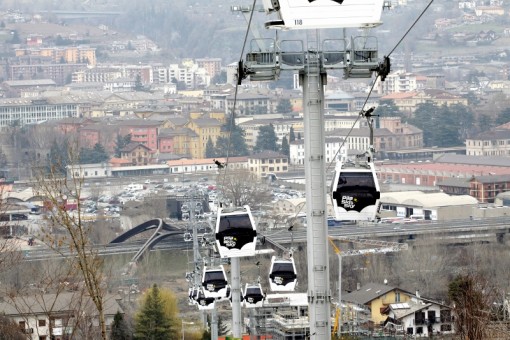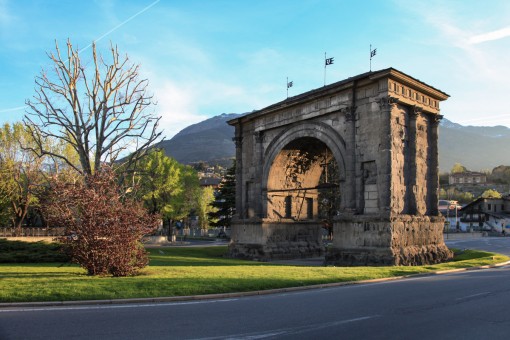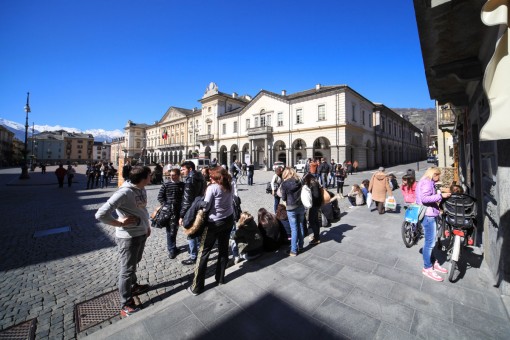Aosta is the valley’s largest town, full of Roman monuments, shops and restaurants, and framed by epic mountains.
Aosta is an old Roman town at 583m above sea level, and the largest in the region with a population of 35,000. Full of things to see and do, it’s surrounded by magnificent mountains, including the Grand Combin and the Mont Vélan to the north, Emilius and the Becca di Nona to the south, and the Testa del Rutor to the west.
Perfect for
Quick facts
- The Roman capital of the autonomous Valle d’Aosta region
- Founded in 25BC by the Romans
- Situated where the roads to Switzerland and France converge
- Hosts the famous Sant’Orso Fair every January
- Cable car direct to Pila ski resort from the town centre
Getting to Aosta Town
Aosta is the main city in the Valley and is situated in the middle of the Valley floor on the A5 motorway from Turin and Courmayeur, only 110KM from Turin and 145KM from Geneva. It is also possible to get a direct train from Turin.
More about Aosta Town

LOCATION
Located in the centre of the Aosta Valley, the town was founded by the Romans in 25 BC at a geographical point where the physiographic catchment of the Dora Baltea reaches its maximum width, and where the main roads heading to France and Switzerland converge. The presence of the Piccolo and Gran San Bernardo Alpine hills makes Aosta an important strategic junction from a transport point of view (nowadays thanks to the Mont Blanc and Gran San Bernardo Tunnels).
SHOPPING AND DINING
Those staying in the ski resort of Pila often take the 18-minute gondola-ride from there down to Aosta town to sample its delights. There are plenty of shops selling delicious local delicacies, arts and crafts; and lots of restaurants and bars to sample too.


MONUMENTS
Rich in monuments from pre-historical, Roman, medieval and later times, Aosta makes a fascinating historical case study. There’s the megalithic area of Saint-Martin de Corleans; the Praetoria Gate, one of the few examples from Roman times still perfectly intact; the Theatre; the forum Cryptoporticus, the perimeter of the boundary walls almost completely intact; a well-preserved extra muros villa; and the magnificent Augustus’ Arch. Ancient roads, fountains, wash-houses, votive chapels, sundials, historical houses and courtyards are also in abundance
MEDIEVAL ART
Aosta is also home to two masterpieces of Medieval art: the Cathedral and San‘Orso. Both feature amazing Ottanian frescoes and a wooden choir; the cathedral also has a treasure museum; and Sant‘Orso Collegiate boasts enchanting cloisters too.


EVENTS
The thousand-year-old Sant‘Orso Fair is held each year in the centre of Aosta on the 30 and 31 January. Its origins have been lost over time, so much so that someone set the year 1000 as its starting date. So each fair is now numbered as though the first one had been held at the start of the second millennium of our time. Attracting visitors from afar, it’s a craft fair with artefacts in wood, soapstone, wrought iron, lace and woollen fabrics, as well as farming equipment, furniture, household utensils and sculptures.

